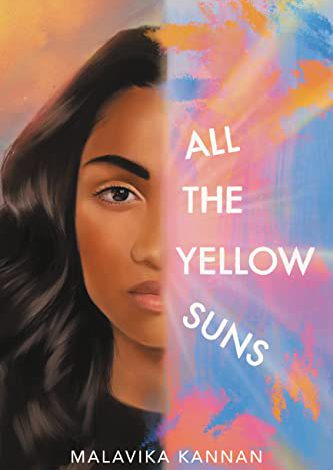On par with books by David Levithan, All the Yellow Suns by Malavika Kannan is a story about a sixteen-year-old queer Indian-American girl who believes art’s power is to disrupt narratives and to recreate reality. Mayavati Krishnan is an optimistic, talented, and opinionated social justice activist.
Set in Florida, Kannan’s book follows the lives of several brown teens who are fighting to be seen, not to be targeted and bullied by authority figures. Maya and her mother have been abandoned by Maya’s artist father whose true love is art. Because Rajendra made the choice to stay in India, Maya is angry, an emotion that she often channels in her art.
While enrolled in Art Studio, Maya meets Pat Campbell and Juneau Zale. The two girls are members of the Pugilists, a resistance society that specializes in pranks, mischief, and chaos. Needing a talented artist for their next resistance message, they decide to recruit Maya, who is soon pulled in by Juneau’s reckless magnetism and willful abandon. Somehow, Juneau flips a switch in Maya, who feels more alive when in Juneau’s presence. Previously unaccustomed to sneaking out or breaking rules, Maya is suddenly smoking pot, lying, trespassing, and committing vandalism.
Besides being a coming of age story, Kannan tells the story of a teen who is trying to determine her place in her father’s life. Is Rajendra “a tortured genius, a caring father, or a selfish artist who couldn’t support his own family” (101)? In the process, Kannan defines an artist’s rush of power, the heady feeling of having created something that communicates a strong message and leaves people thinking.
Another aspect of the novel is its exploration of sexuality and identity and how the “real miracle was to be known, to be loved as you were” (220). We all respond to someone else’s attention, which anoints our lives with meaning. On that self-discovery journey, we hope for “the perfect finale: the one where everyone on earth finds what they’re looking for. Someone to love, a place to call home, something as simple as a yellow sun. Where they find their needs inside themselves as if they were there all along” (363).
Through Maya and Juneau, readers realize that on life’s journey, we all meet people who touch our lives. Furthermore, we all have experiences that shape our personalities. Maya accepts that “in life, unlike in art, we cannot make other people into who we want them to be. Humans are not canvases to be molded and altered” (368).
- Posted by Donna

